An exhibition rediscovers the restless and paranoid inspiration of Raoul Dal Molin Ferenzona, decadent dreamer
From November 14, 2024 to March 15, 2025, the Pinacoteca Comunale “Carlo Servolini” in Collesalvetti (Livorno, Italy) will host the exhibition Raoul Dal Molin Ferenzona: Enchiridion Notturno. A Decadent Dreamer Toward Occultism and Theosophy, promoted and organized by the Municipality of Collesalvetti, conceived and curated by Emanuele Bardazzi and Francesca Cagianelli, with the contribution of Fondazione Livorno, in collaboration with the Italian Theosophical Society (media partner). The exhibition intends to illustrate, through an exhibition of about 80 pictorial, graphic and illustrative works, the important career of Raoul Dal Molin Ferenzona (Florence, Sept. 24, 1879 - Milan, Jan. 19, 1946), whose Florentine extraction and many years of militancy in Livorno were combined with long stays in Europe, the outcome of which definitively influenced the artist’s Symbolist and esoteric vocation.
The exhibition thus aims to reread the biography, style and varied production of a refined protagonist of the Tuscan twentieth century such as Raoul Dal Molin Ferenzona, already investigated between 1978 and 1979 in two pioneering exhibition initiatives, respectively at the Emporio Floreale in Rome and at Villa Maria in Livorno - both curated by Mario Quesada with undoubted investigative talent - and subsequently framed within an egregious historiographical framework by Emanuele Bardazzi, who in 2002 settled a reasoned reconnaissance of the artist’s estheticizing and mysterious path, which had been out of the critical spotlight for more than two decades.
He was born in Florence on Sept. 24, 1879, to a “vaguely aristocratic family,” whose father Giovanni Gino, a writer and man of letters, was the Livorno correspondent of “La Gazzetta d’Italia”, and, as the author of two anonymous pamphlets against Garibaldi, earned the hostility of Garibaldians and Mazzinians, until he was stabbed to death on the evening of April 19, 1880, Ferenzona would take on in his complex personality the stigmata of this and mournful biographical preamble, in all likelihood at the origin of the fatal link with Livorno, whose cosmopolitan exhibition stage of “Bottega d’Arte” will constitute a significant stage in the context of his mysterious and nomadic career.
In about eighty works, divided into four sections, the curators propose an immersion in the eclectic universe, between mysticism and decadentism, of a protagonist of the Tuscan twentieth century, marked by an incurable spiritual torment, exacerbated by the restlessness of eternal déraciné devoted to nomadic life, alcohol abuse and a’nervous instability capable of triggering paranoid obsessions and persecutory voices in his mind, and whose ascetic tension in the spasmodic search for arcane and transcendental goals represented an authentic evolutionary process of the soul and alchemical transmutation of consciousness, generated by the inner conflict between the reasons of Good and Evil.
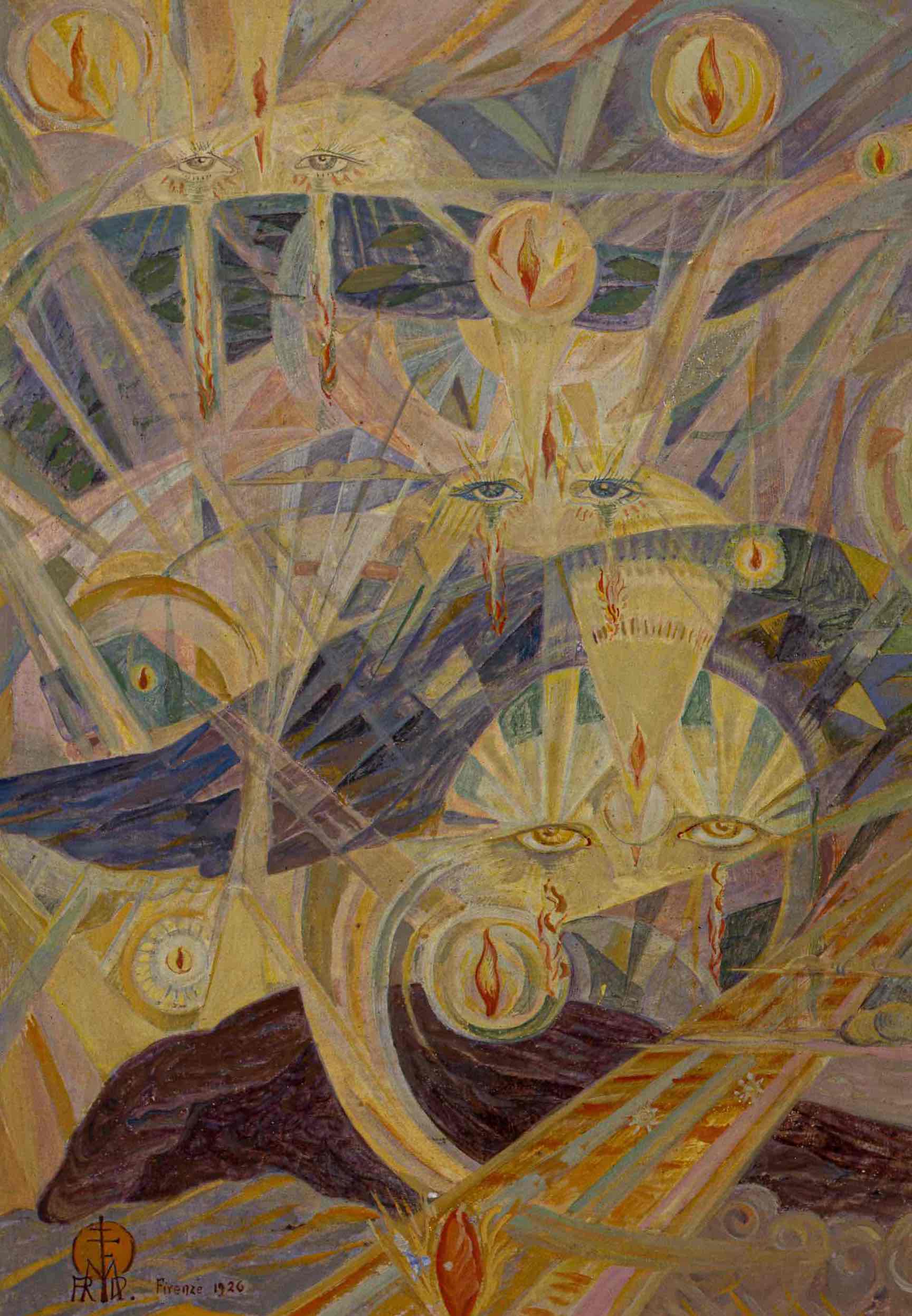
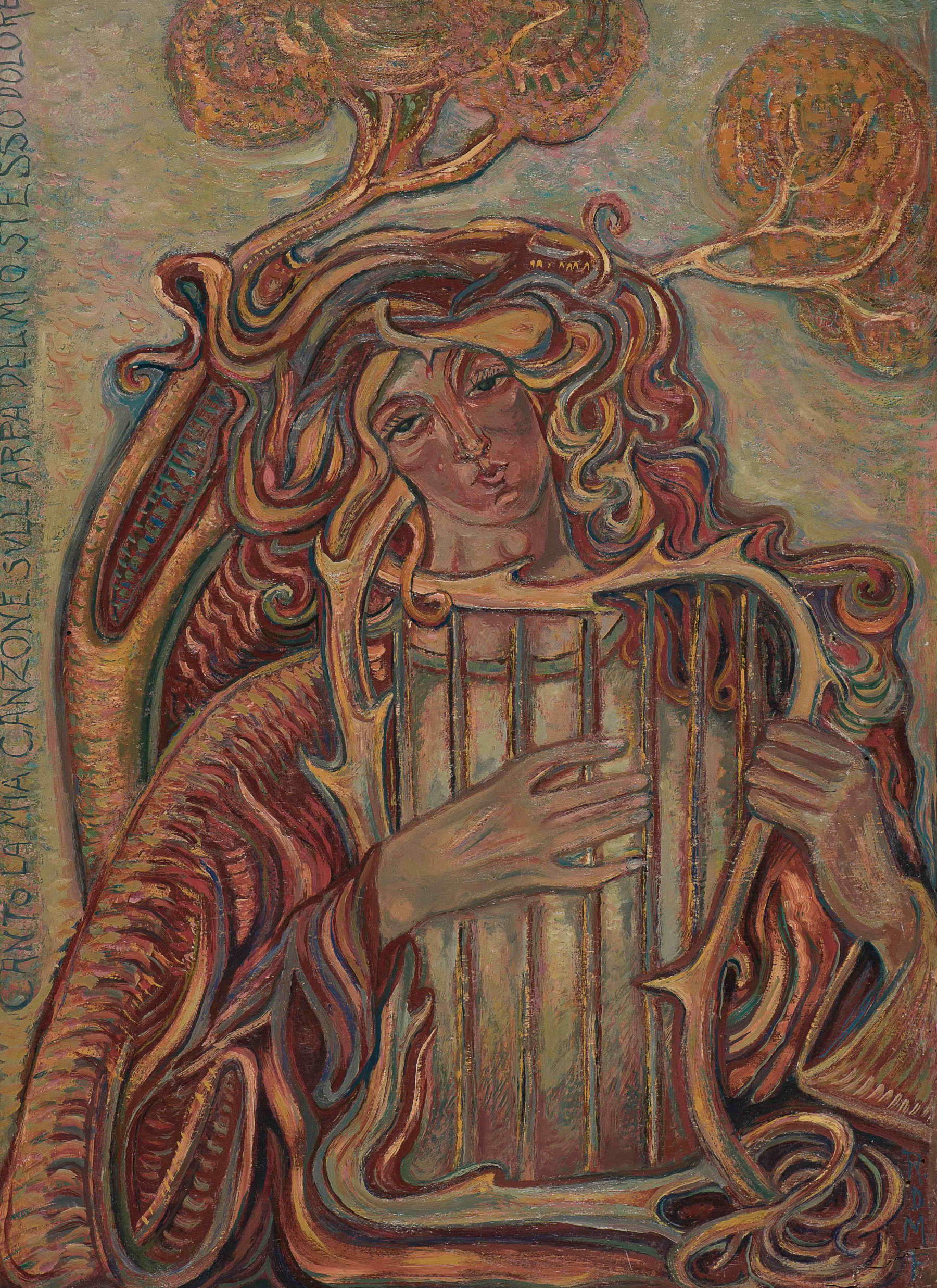
Landing after endless international peregrinations, from Paris to Vienna, from Bruges to The Hague, from Moravia to Prague, in the Leghorn area, Ferenzona succeeded in rooting himself brilliantly within the city’s artistic cohort, from the Caffè Bardi to the Gruppo Labronico, with a congerie of portraits, landscapes, mystical, esoteric, and occultist strongholds, destined to exert a fatal attraction on the public, even to the point of establishing himself as the creator of a féerie theatrical, reconstructed today for the first time thanks to the extraordinary documentary and iconographic material preserved in the Archives of the National Gallery of Modern Art in Rome, ( Archives section of Italian applied arts of the 20th century), as well as well as as as a result of a timely filing of the city newspaper “Il Telegrafo,” on the pages of which Ferenzona himself extolled the unprecedented spectacularization of the pedagogical method of Swiss composer Émile Jaques-Dalcroze (Vienna, July 6, 1865 - Geneva, July 1, 1950).
The first section of the exhibition, titled “Raul Dal Molin Ferenzona between Italy and Europe: the heterodox viaticum of a Rosicrucian initiate,” curated by Emanuele Bardazzi, is entrusted with thirty-two important works from the artist’s pictorial and graphic career, particularly significant of an artistic path that began at the dawn of the twentieth century and evolved until his death with fidelity and consistency to his own unconventional aesthetic principles and anagogical symbologies, through a complex interweaving of multifaceted Italian and international experiences punctuated by countless travels at home and abroad, punctuated by readings, lectures and exhibitions. It consists of paintings, watercolors and etchings where several unpublished works of extraordinary fascination stand out.
Among the works related to the theme of tempting and baleful femininity are several never-before-seen masterpieces, including The Sisters, depicting two intriguing women’s faces with luciferous features; Masks, fantastical digression animated by female nudes and grotesque characters alluding to James Ensor’s masquerades; and, again, Landscape with faunesse, where two mysterious and hybrid creatures lie immersed in a metamorphic and wild nature. They are contrasted with idealized and arcane images of Muses vibrant with melancholy and alchemical symbolism, also previously unseen, including the mysterious and priestly Woman with Moth; chosen not coincidentally as the exhibition icon; a mystical maiden playing the harp accompanied by the motto I sing my song on the harp of my own sorrow; and then aengraving dominated by a female figure holding a key, bearing at the foot of it the quotation Il n’y a rien de plus beau qu’une clef, tant qu’on ne sait pas ce qu’elle ouvre by Maurice Maeterlinck, the origin of Ferenzona’s abiding predilection for the literature of Belgian Symbolism and a source of inspiration for the Crepuscular poets whose Roman coterie he joined through his fraternal friendship with Sergio Corazzini. Of extreme interest in this first section, a florilegium of undoubtedly anthological register of Ferenzoniana’s production, turn out to be some engraved portraits of famous figures such as William Blake, Aubrey Beardsley and Gabriele d’Annunzio, toward whom the artist conceived special elective affinities. Also present are iconic paintings such as The Eyes of Angels, Fulvia, The Summit, and Gaspard de la nuit inspired the latter by the collection of Gothic prose poems of the same name by Aloysius Bertrand, much beloved by Charles Baudelaire. Suggesting this overture is a very rare and previously unseen painted wooden tabernacle entitled Annunciation of Mary, formerly belonging to the artist Luca Patella.
The second section, titled "As the Cross of Your Dream: Ferenzona’s spiritual nomadisms from Corazzini’s Crepuscolarism to the Theosophical Society of Rome," curated by Francesca Cagianelli, aims to trace stages and relationships inherent in the repeated Roman sojourns of theartist, from the very first conjuncture of 1904, marked by his contiguity with the artistic and literary circuits of crepuscular decadentism, culminating with the writing of La Ghirlanda di stelle, published in 1912 and dedicated to his two closest intimate friends, fellow Faentine Domenico Baccarini, whom he had met while attending the Accademia di Belle Arti in Florence, and the poet Sergio Corazzini, with whom he was to share the prestigious collaboration on the magazine “Cronache latine,” for which he executed the cover of the first issue that has now become an extreme rarity and can now be seen in the exhibition. Opened by the prophetic and dandystic Self-Portrait of the Artist (1904-1907), followed by the magnificent unpublished Portrait of Domenico Baccarini (c. 1904.), executed in pastel in 1906 shortly before his death, the section unfolds on the wave of suggestion of some cornerstones of the purist production of Pre-Raphaelite and Khnopffian echoes, such as The puppets, loosely inspired by La femme et le pantin by Félicien Rops; Gravis dum suavis, hymning the Latin motto used by d’Annunzio to evoke the bloodless sweetness of Ippolita Sanzio in his novel The Triumph of Death; Our Lady of the Seven Sorrows, and finally the extraordinarily unpublished The Ebony Urn and the Ivory Amphora (1914), all icons of a languid mysticism poised between seduction and asceticism, destined to flow into a religious sensualism that echoes the poetics of the Belgian Symbolists that of the Corazzini of theBitter Chalice, not without similarities to Giovanni Pascoli’s Digitale purpurea and Gabriele d’Annunzio’s Poema Paradisiaco.
Central pivot of the expressive itinerary unraveled in this second section is the drypoint of exclusively malefic extraction, Le Orvietane (1909), whose gloomy cloaks, alluding to the Ferenzonian leitmotif of bats, admirably evoke thenocturnal imagery typical of the Orvietan season, when the artist, in close contiguity with Umberto Prencipe, was engaged in restoring visionary atmospheres and mournful forebodings, indebted to the Bruges-la-death temperament of Rodenbach. The ideal conclusion of the exhibition itinerary is entrusted to two specimens of the Cartella Via Crucis (Rome, Società Editrice Universa 1919-1921), coeval with one of the artist’s bookish masterpieces, Zodiacal, Religious Work. Orazioni, acqueforti, aure di Raoul Dal Molin Ferenzona (Rome, Casa Editrice Ausonia, 1919), the extreme landing place of Ferenzona’s esoteric reasoning, further articulated within the artistic and cultural circuits of the Theosophical Society of Rome.
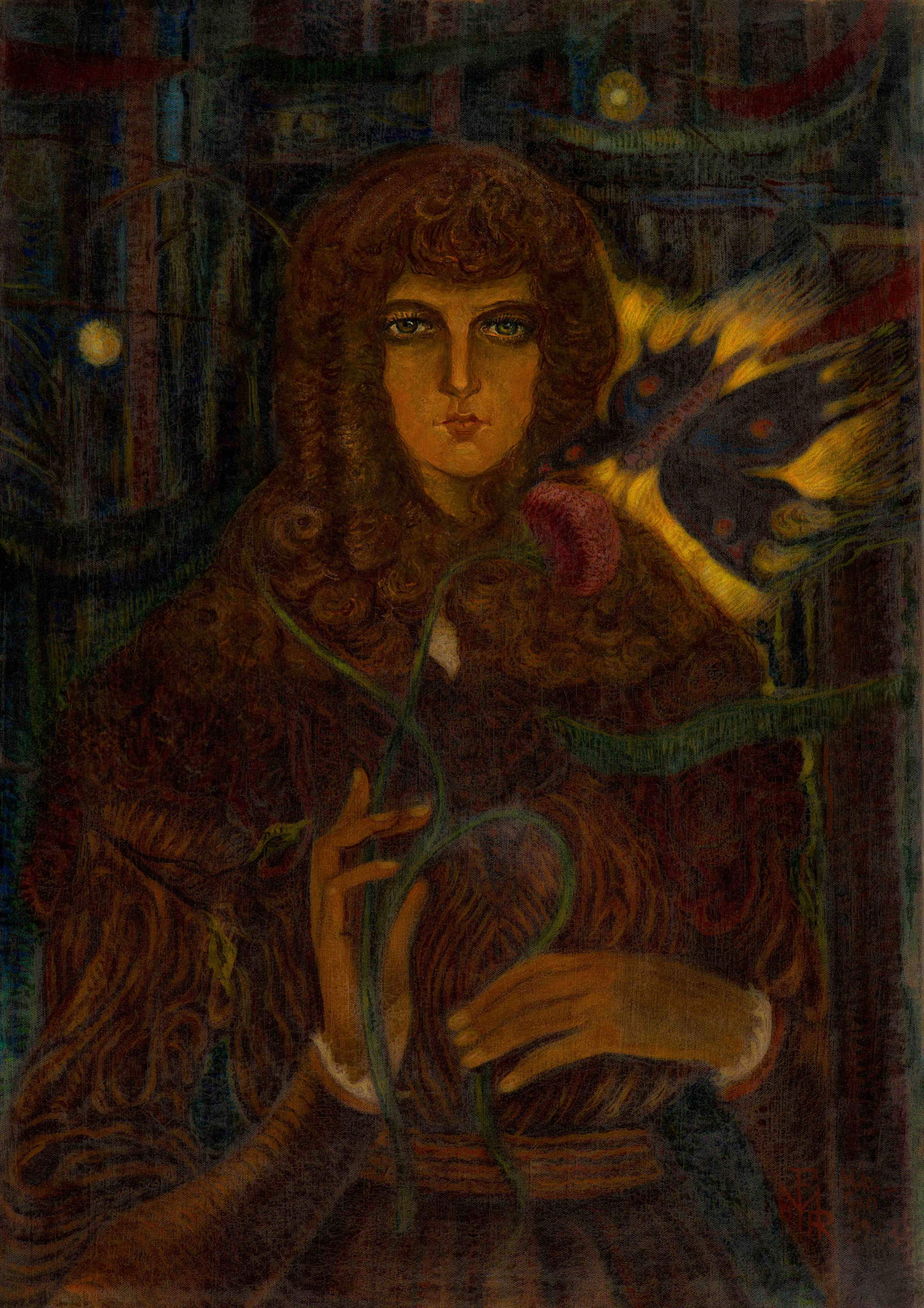
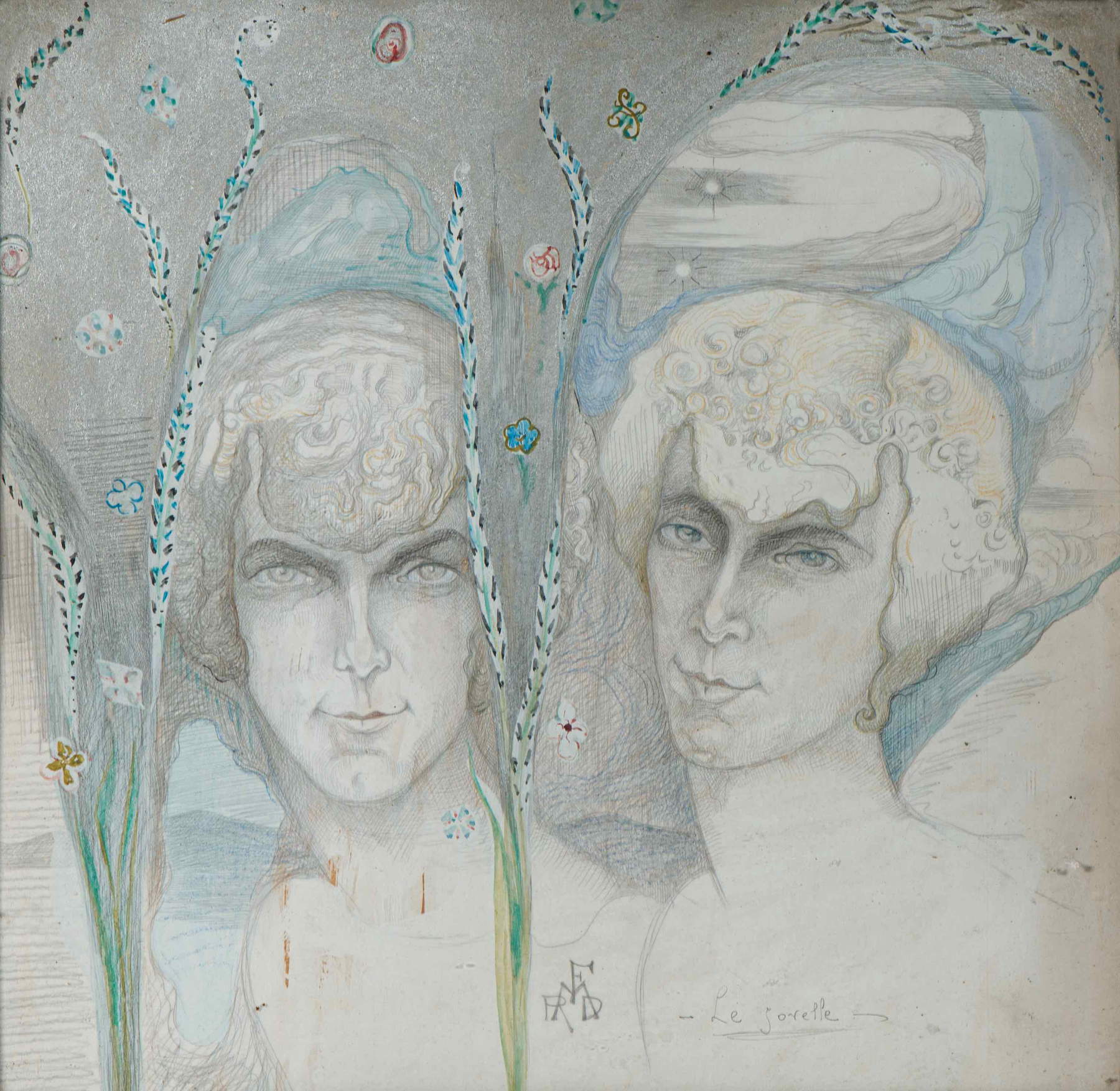
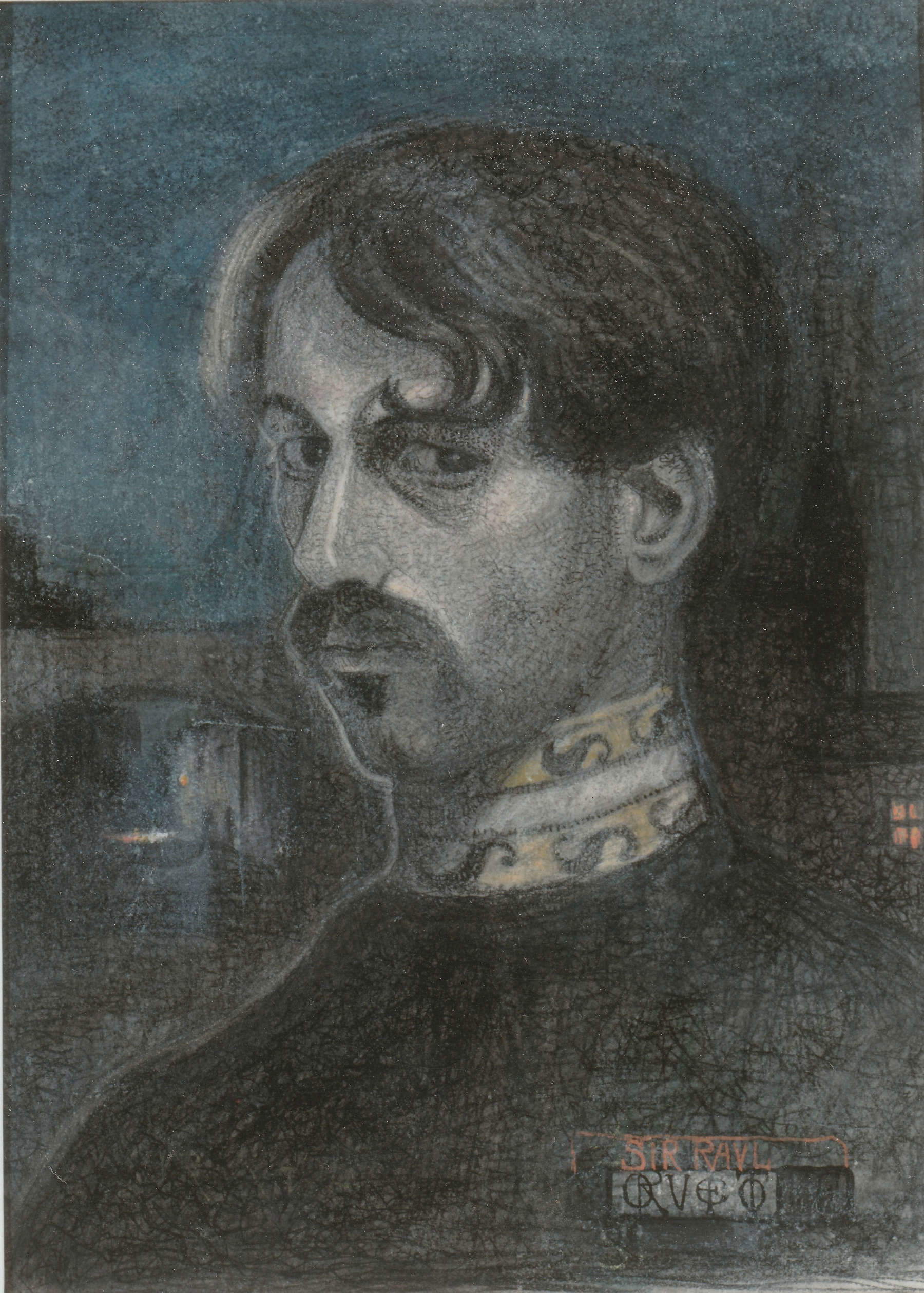
The third section, entitled “Ferenzona’s Livorno season from Caffè Bardi to Bottega d’Arte: Drops of Poison Between Maudit Revival and Esoteric Pastiches,” curated by Francesca Cagianelli, aims to focus on the centrality of the artist within the early twentieth-century Labronica cohort, inaugurated in 1916 with the crucial exhibition at the Bagni Pancaldi reviewed by Giuseppe Maria del Chiappa, and subsequently attested by the repeated participation in the exhibition calendar of “Bottega d’Arte” Livorno, first between 1922 and 1923 and then again in 1923, while in 1924 he would appear in the VII Mostra del Gruppo Labronico set up in the rooms of the Regio Liceo Niccolini. It is worth recording that on the occasion of the 1923 solo exhibition, Maria Amadasi Rossetti will emphasize the fervent Livorno response to the exceptional nature of the Ferenzonian phenomenon, confirming the growing appreciation of a Symbolist proposal, albeit cultured and elitist. Ponderous on that occasion was the unfolding of the exhibition itinerary, consisting of a hundred works, including tempera, paintings and watercolors, with the addition of woodcuts and etchings, destined to trigger in the public and among critics even “ultra-earthly sensations,” not to mention that Amadasi Rossetti herself will show extreme awareness of that Rosicrucian brand culture of mulieval perversion innervated by Ferenzona in his cocottes and ’perfidious damsels.’ Having become at such junctures an authoritative and privileged collaborator of Belforte Publishing House, Ferenzona signed in the same 1923 yet another editorial masterpiece, AÔB (Enchiridion notturno), presented in thecontext of the Book Exhibition organized once again in the halls of “Bottega d’Arte” in December 1923 and curated by the Belgian symbolist Charles Doudelet, who shared with the artist a long-standing affiliation with the circuit of the Theosophical Society of Rome.
Among the most significant unpublished works in that section, courtesy of Emanuele Bardazzi, are two etchings presented at “Bottega d’Arte,” namely The Restaurant (c. 1910.), of decadent and nocturnal temperament, and I ladri (1914), extraordinarily linked to the universe of the angiporti practiced at the time by Renato Natali and Gastone Razzaguta, shortly thereafter triumphant with similar subjects at the Pro-Soldier Exhibition; and again I tre dei e le tre stelle(The Three Gods and the Three Stars(I viveurs), attributable to 1920, which Ferenzona also affixed to accompany a unique copy, bound in illuminated parchment, of the symbolic-astrological inspired story of the same name, taken from Zodiacal, and also exhibited at “Bottega d’Arte.”
The fourth section, titled “Visionaries, Mystics and Demons: prodromes of international graphic art from the aesthetic idealism of Péladan to the Prague occultism of Sursum,” curated by Emanuele Bardazzi, offers a valuable representation of the European Symbolist milieu between the 19th and ’900, which was a primary source of inspiration for Ferenzona’s imaginative production, matured in his youthful years through his wanderings in different foreign cities-from Munich to Bruges, from L’Aya to Bern, from Vienna to Prague-in search of elective affinities and spiritual nourishment. Thus parading are graphic works by Félicen Rops, Fernand Khnopff , Marcel-Lenoir and Carlos Schwabe (whose large original poster from the first Salon de la Rose+Croix in 1892 is on display), artists favored by Rosicrucian leader Joséphin Péladan because they were in line with his creed of idealist art of a Catholic-esoteric stamp. Present were Dutch artists such as Jan Toorop and Richard Nicholaüs Roland Holst, who combine Pre-Raphaelite influence with the modernist line of the Nieuwe Kunst, and the Frenchman of Belgian mother and Dutch father Georges De Feure with an evocative nocturnal lithograph from the Bruges mystique et sensuelle series, inspired by Georges Rodenbach. A rare etching by Joseph Uhl, Askese, depicting a nude nun with a cross of thorns on her hips refers in an almost palpable way to a subject executed in pointillism by Ferenzona to illustrate the volume Aôb, while Schlangenbraut(The Bride of the Serpent), engraved by Heinrich Vogeler, relates to our own fairy tale-themed etchings devoted to princesses captive to frightening dragons. Finally, there is no shortage of three representative exponents of the Prague Sursum group, namely Josef Vachal, František Kobliha and Jan Konůpek, who color the Bohemian Secese with occultist overtones poised between diabolism and asceticism.
The Silvana Editoriale catalog, edited by Emanuele Bardazzi and Francesca Cagianelli, brings together various unpublished documentary materials unearthed, as well as an articulate and original reinterpretation of the European season shared by the artist, as well as a detailed reconstruction of some important episodes in the Labronian sphere that contribute to redrawing an unquestionably international temperament on our territory.
Parallel to the four sections ordered by the curators, there is, in accordance with the now long-standing exhibition practice of the Pinacoteca Comunale Carlo Servolini, a bibliographic and documentary section, which presents a preview of a wide range of the artist’s publishing ventures, courtesy of Emanuele Bardazzi for the most part: Ferenzona’s Fergan, The Three Wooden Musketeers, Florence 1904; “Cronache Latine,” Rome December 15, 1905; “Vita d’Arte,” Siena, April 1909; Raoul Dal Molin Ferenzona, La ghirlanda di stelle, Rome 1912; Raoul Dal Molin Ferenzona, Aquila ipse est Johannis, Florence 1917; Raoul Dal Molin Ferenzona, Zodiacale. Opera religiosa, Rome 1919; Raoul Dal Molin Ferenzona, Vita di Maria, Rome 1921; Raoul Dal Molin Ferenzona, AÔB, Livorno 1923; “Bollettino Bottega d’Arte,” Livorno, January 1923; “Gruppo Labronico. VI mostra d’arte,” Livorno, August-September 1923; “Bollettino Bottega d’Arte,” Livorno, December 1923; “Bollettino Bottega d’Arte,” Livorno, June-July 1924; Raoul Dal Molin Ferenzona, Ave Maria, Florence 1926; Paul Verlaine, L’amour et le bonheur, Milan 1940; Alessando Manzoni, Inni sacri, Florence 1944.
Completing that section are two highly refined artifacts of applied art, conceived and made by the artist, Table Lamp, carved in wood, and Staff with ivory handle, valuable testimonies to that commitment in thesphere of decorative arts appreciated and pointed out in Livorno by the outsider Giuseppe Maria Del Chiappa, who in the pages of the Telegraph in 1916 proposed, not surprisingly, comparisons with ancient Persian miniaturism and modern German book art: “His ’decorative designs’ fabricated for cloth, for panels, etc.,” he said., approached for some time different styles; from Russian to ancient Persian, to modern German; but they then came out in their Ferenzonian personality. And if today they are hints, notes, fragments in short,“ Del Chiappa hopes, ”we must believe that they will increase in size and that we will enjoy the realization of that joy of colors and forms that the decorator in the anxiety of his desire has today fabricated for its beauty.
The exhibition, with free admission, is open every Thursday, Saturday and Sunday, 3:30-6:30 p.m.; also by reservation for small groups; free guided tours by appointment: info: 0586 980118-227 and 392/6025703; cultura@comune.collesalvetti.li.it; www.comune.collesalvetti.li.it
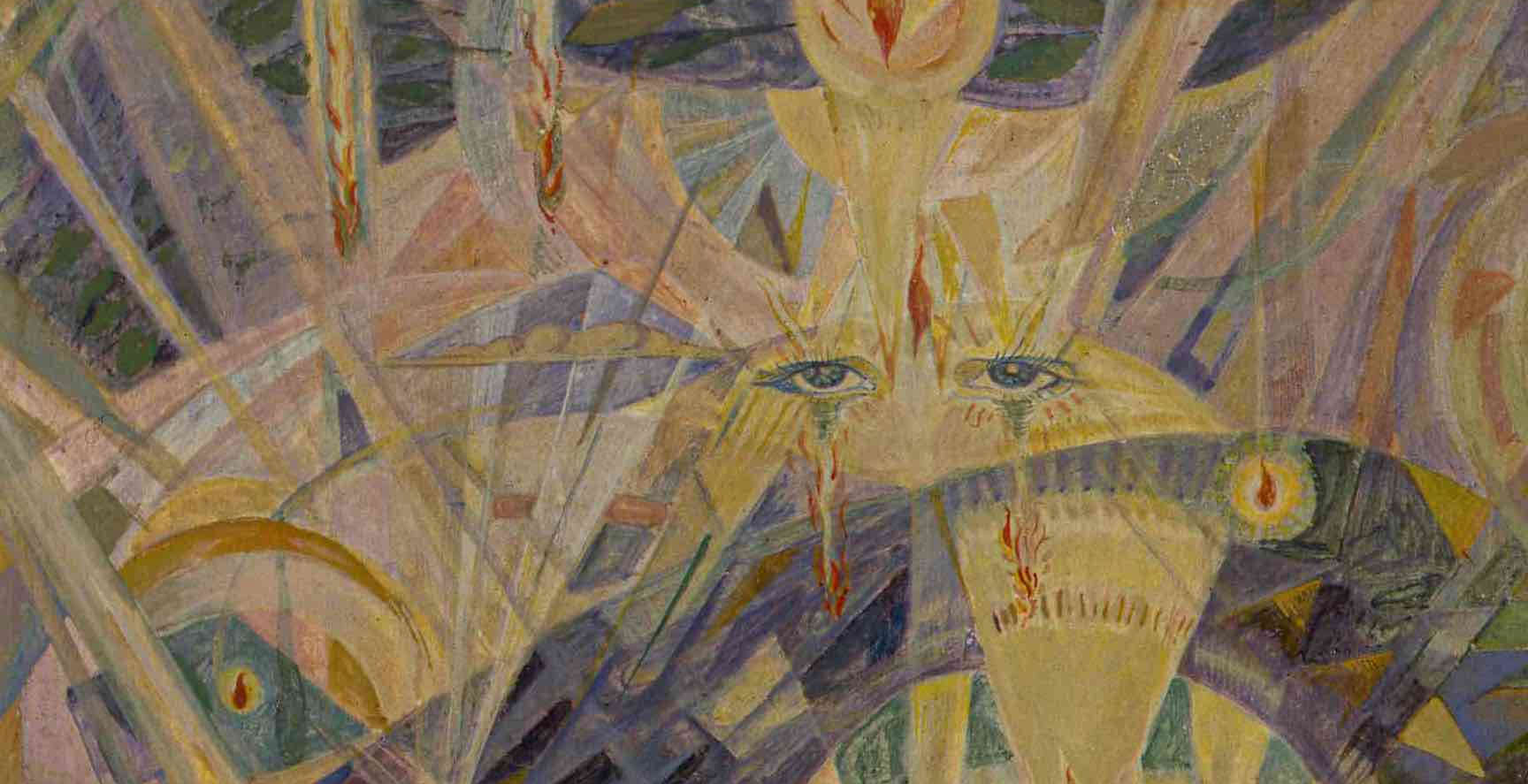 |
| An exhibition rediscovers the restless and paranoid inspiration of Raoul Dal Molin Ferenzona, decadent dreamer |
Warning: the translation into English of the original Italian article was created using automatic tools. We undertake to review all articles, but we do not guarantee the total absence of inaccuracies in the translation due to the program. You can find the original by clicking on the ITA button. If you find any mistake,please contact us.





























